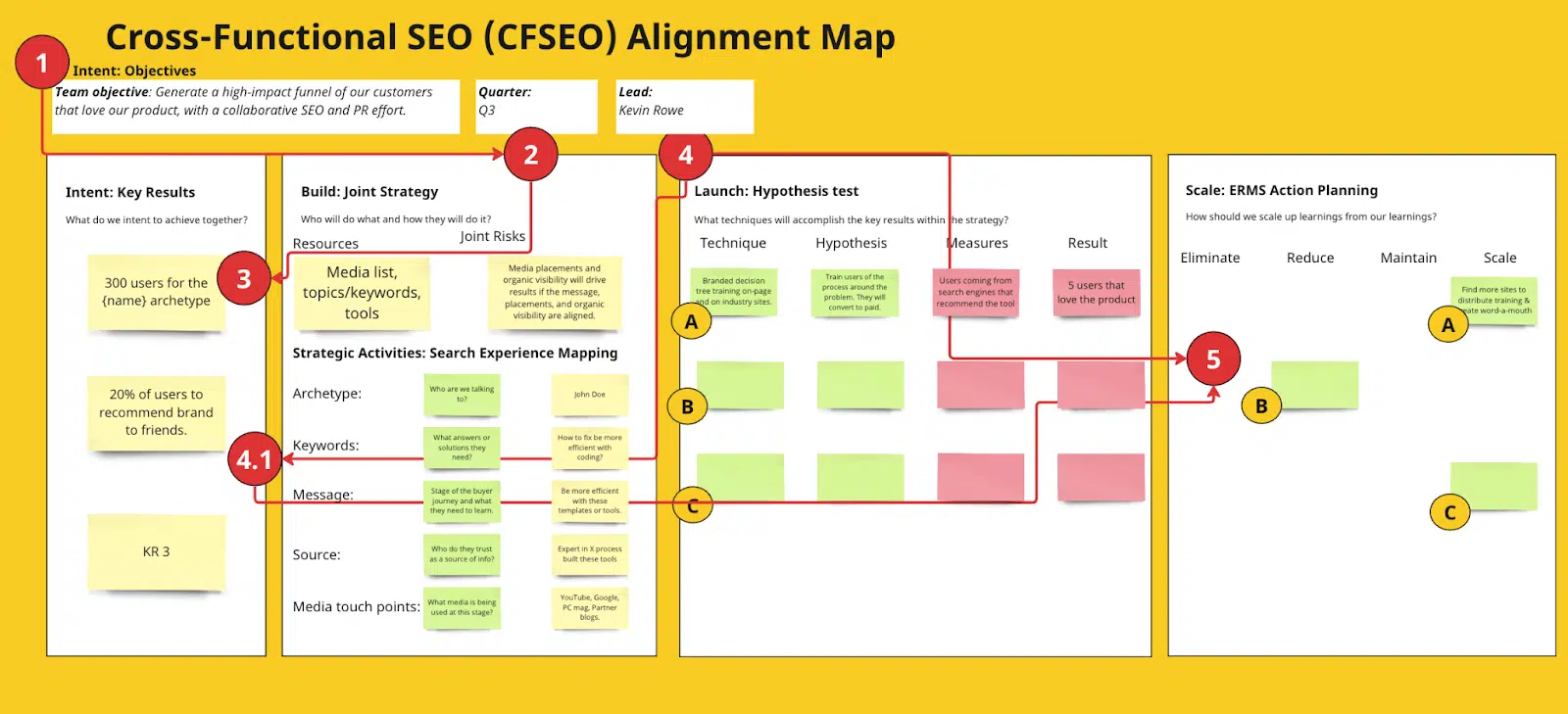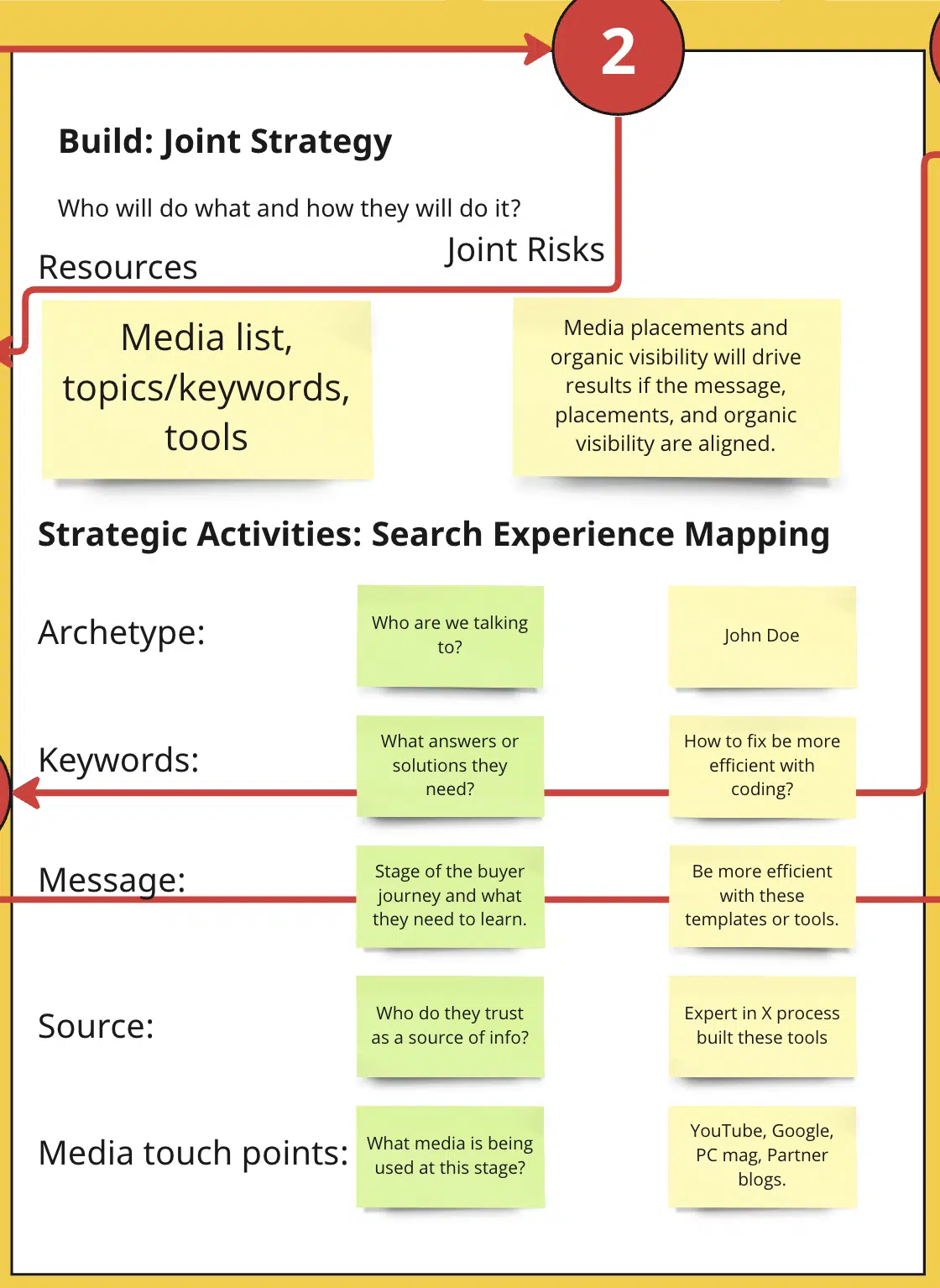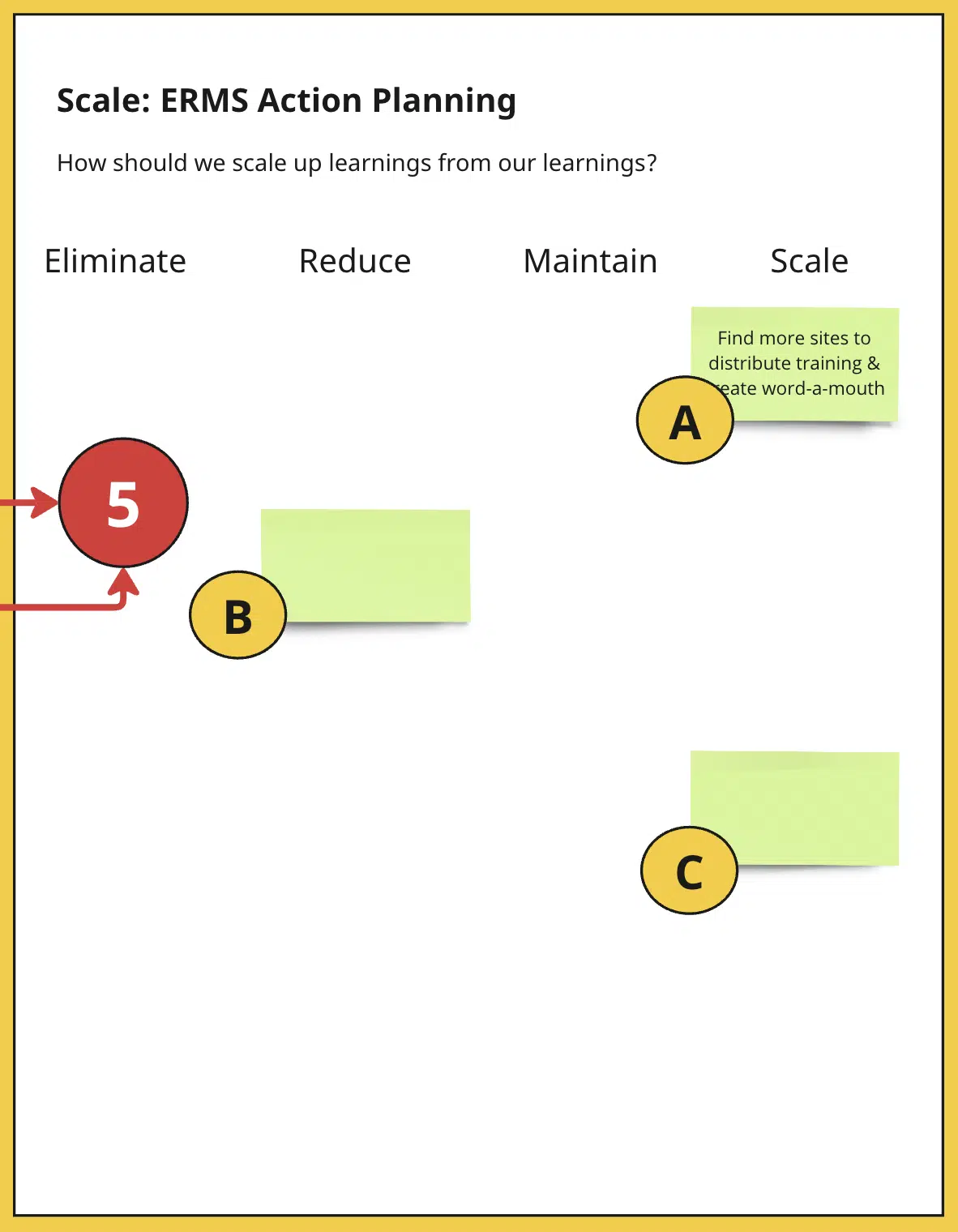How to create cross-functional SEO and PR teams for enterprises
Break down the silos between SEO and PR teams. Use this guide to set shared goals, create a unified strategy, test ideas and scale successes.
In an era influenced by powerful algorithms, the intersection of SEO and PR is crucial but often overlooked by enterprise leadership.
This partnership has its challenges. PR may not always acknowledge the intricacies of SEO. While SEO, focused on shaping the customer experience, may overlook the human stories conveyed by PR.
By harnessing the methodical prowess of SEO and the storytelling of PR, the enterprise can orchestrate an integrated marketing campaign that resonates in a way that influences behavior. Here’s how.
Why integrate SEO and PR?
Combining SEO and PR is woefully untapped in a corporate setting.
- “In-house enterprise SEO structure, the more the PR and SEO teams are in contact with each other on best practices and strategy, the more effective links to the site will be,” said Jesse McDonald, global SEO strategist for IBM.
McDonald, an active expert contributor to the SEO community (as a guest speaker, author, award judge and podcast guest), deeply understands contemporary SEO practices and operates in an enterprise environment.
SEO and PR can influence the growing online media landscape of news, search engines (Google, YouTube, etc.), blogs, podcasts, webinars or social media.
Integrating SEO and PR will amplify the results of both because:
- Certain PR techniques can build a strong off-page user experience that influences organic visibility.
- Search engines, media and blogs are key touchpoints in the online consumer journey that influence buying or content consumption behavior.
- PR and SEO can create funnels to drive leads or sales online.
At any stage of the buyer’s journey, from learning they have a problem to purchasing, the audience can use search engines to answer their questions.
Search engines are 86% effective at finding answers online, the Hubspot Consumer Trends report found.
However, a corporate PR team has its own goals, and ranking improvement is not a top priority.
Dig deeper: 6 steps to a winning enterprise SEO strategy
The issues with corporate SEO + PR collaboration
Digital marketing teams face challenges when integrating SEO and PR:
- PR has objectives and methods that don’t always include search engines.
- SEO is a black box to many PR teams that is difficult to integrate into a PR campaign.
As Dana Tan, director of SEO at Under Armour, pointed out:
- “A large obstacle to overcome in a siloed corporation is educating the PR team about SEO capabilities,”
When different team members across functions work together around a common goal, they become a cross-functional team.
A cross-functional team has its dysfunctions, regardless of whether it is SEO or PR.
Behnam Tabrizi, who teaches Leading Organizational Transformation at Stanford, studied 95 teams in 25 corporations and identified four elements to avoid a dysfunctional cross-functional team:
- End-to-end accountability leader: Having a single team lead that can facilitate the team collaboration around an objective.
- Clear goals, resources and deadlines: Creating a seamless team aligned around a common goal, with overlapping resources and deadlines around an integrated strategy.
- Project success as the main focus: PR teams have their priorities that conflict with SEO priorities. Establish a common strategy that the team is aligned around.
- Constantly re-evaluated: Perform a post-mortem with the SEO and PR teams to understand what worked and didn’t.
How realistic is cross-functional SEO for enterprise SEO teams to execute?
- “I would say that it acts as an ideal state for a large enterprise company. From my experience and what I’ve heard from others, cross-function collaboration is incredibly difficult because of how teams are usually organized and siloed from each other,” McDonald said.
So, what is a cross-functional SEO team?
What is a cross-functional SEO (CFSEO) team?
CFSEO is a temporary or long-term cross-functional team focused on reaching business or marketing department goals using search engines and other media.
A CFSEO team is measured by impact on business results and not leading metrics like ranking or count of Jira tickets submitted, for example.
The CFSEO team can be a collaboration between any internal team: digital marketing, SEO, PR, content, developers/engineers (this is the most common in corporate) and leadership.
When digital marketing managers work with content marketing to request content around a topic, they optimize it for search engines; this is cross-functional.
When an SEO professional optimizes the content to integrate keywords, this is cross-functional.
These teams can be strategic and powerful tools to reach business, departmental or team goals.
How to align the CFSEO team for PR
The CFSEO framework aligns the PR and SEO teams to accomplish key business results. The framework is a process to align various tools and models to reach the common Objectives and Key Results (OKRs).
Intent setting
This step finds a reason for SEO and PR to collaborate. It does this by setting shared objectives and key results to which both teams are accountable.
- “To get SEO and PR to collaborate, they have to align around the common business goal, or a significant collaboration will not be possible,” said Keith Goode, who has held director and senior roles in SEO at IBM and Cox Automotive.
Strategy building
Identify the positioning of content messages in the minds of an archetype customized to the media and medium (i.e., who is saying what about your content/company and where).
Launch hypothesis test
Identify the asset, then test various media and messaging that resonate with the audience. The technique should include on-page, search engines, and media placements (news, podcasts, blogs, etc.).
Scale with ERMS planning
Determine actions to take against each technique based on the test results.
Using the CFSEO alignment map
The CFSEO alignment map is a tool that simplifies the connection between the four stages.
This map can be used for any strategic collaboration for SEOs, but the tool needs additional sub-elements when working with PR.

Below are the steps for using the map:
Step 1: Setting objectives
Set the objective based on a quarterly planning cycle. Ideally, the team lead should be exceptionally well-versed in SEO and PR. This lead could be an SEO product manager.
Use objectives and key results that both SEO and PR are accountable to. OKRs are a popular tool to align a team with the business or functional goals in a human way.
These objectives should align with the business or marketing department’s goals, according to Goode.

A CFSEO team working with PR and SEO can be a powerful tool to build customer funnels. Set objectives for users and not ranking improvements.
Step 2: Strategy building
Design a strategy from a situation analysis of where the consumer is and what they are talking about with respect to the stage in the customer journey. Identify what the audience is interested in learning and where they go to learn about the solutions.
This strategy framework works well for SEO and PR collaborations, but select an appropriate framework for your company or situation. The frameworks should integrate the channels and not silo them completely.
A hybrid strategy should cover these areas.
- Archetype: Who are you talking to?
- Keywords: What answers or solutions do they need?
- Message: What stage of the customer journey, what UVP and how to solve the issues (assets)?
- Source: Who do they trust as a source of info?
- Media: What media is being used at this stage? Podcasts, bylines, news, expert sources, search engines, etc.
Identifying joint resources and risks that require the team to collaborate is critical after the strategic activities are identified.

Here are a few useful frameworks or tools when brainstorming strategy:
- A search experience map: Maps the keywords, media and messaging around stages of the customer journey.
- Rand Fishkin’s Influence Map: Considers how the website, search engines, and media contribute to the customer’s journey from identifying a problem to finding a solution.
Integrate existing strategic frameworks like the influential asset marketing (IAM) strategy that leverages the company’s helpful assets (e.g., research, tools or processes) to secure media placements.
Step 3: Setting key results
Set key results once you understand how the customer is learning about the solutions and the strategy is identified, then set the key results. Selecting the key results after a situation analysis will produce realistic goals.
However, sometimes, a test project will provide insights into improving the accuracy of the goals; thus, you see step 4.1 as an optional step after the hypothesis test.

Step 4: Launching the hypothesis test
Select a technique and hypothesis to test, then measure the impact.
A technique comprises of:
- An organic asset.
- Messaging around the asset relevant to the audience.
- Media placements.
- Search engine keywords.
Your hypothesis is how you expect these techniques to impact the key results.
However, each test doesn’t have to drive all key results alone. Several techniques work together to drive the overall results and objectives.
Run as many focused tests as possible in a single quarter.

Expect your test to fail the first several attempts each time you run a test.
Do a post-mortem after a test to understand and refine the next test, Goode advised.
Step 5: ERMS action planning
Use the ERMS model to simplify evaluating the technique’s result and prioritize an action plan. ERMS stands for
- Eliminate: This technique doesn’t work, so move on.
- Reduce: The technique drove the results but consumed too many resources for the results.
- Maintain: The technique performed as expected and can be an ongoing project.
- Scale: The technique drives the desired results and, if scaled, can help to reach the objective and key results.

Without changing the assets, test messaging, media, and the medium with the ERMS system.
Get started
The challenges of finding a reason to create this union, creating an integrated strategy, developing tests and building joint actions are not without major challenges.
Facilitate collaboration with the CFSEO alignment map and deepen the strategy with tools like influential asset marketing (IAM) to find successful results.
Dig deeper: How SEO and digital PR can drive maximum brand visibility
Opinions expressed in this article are those of the guest author and not necessarily Search Engine Land. Staff authors are listed here.
Related stories